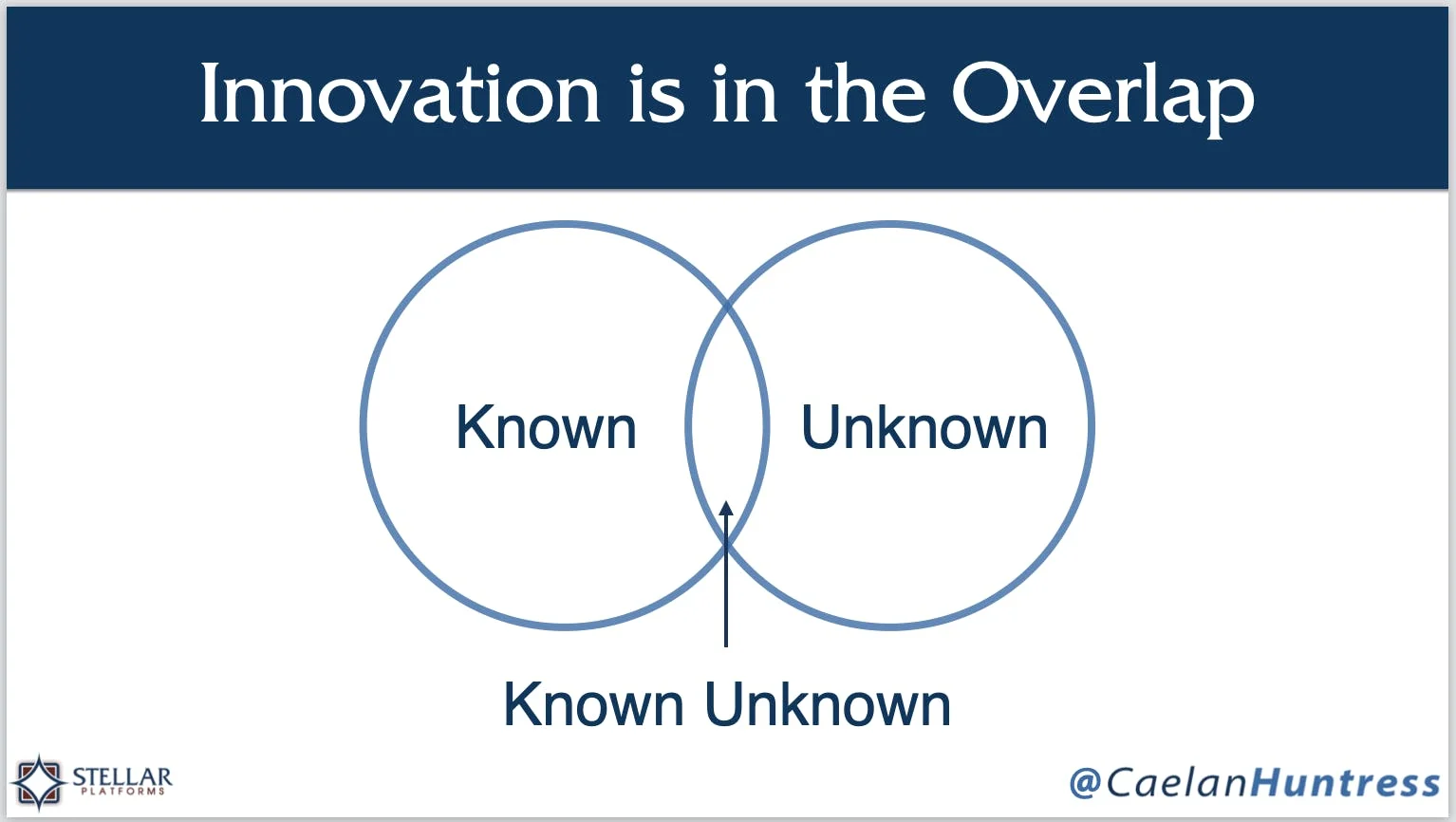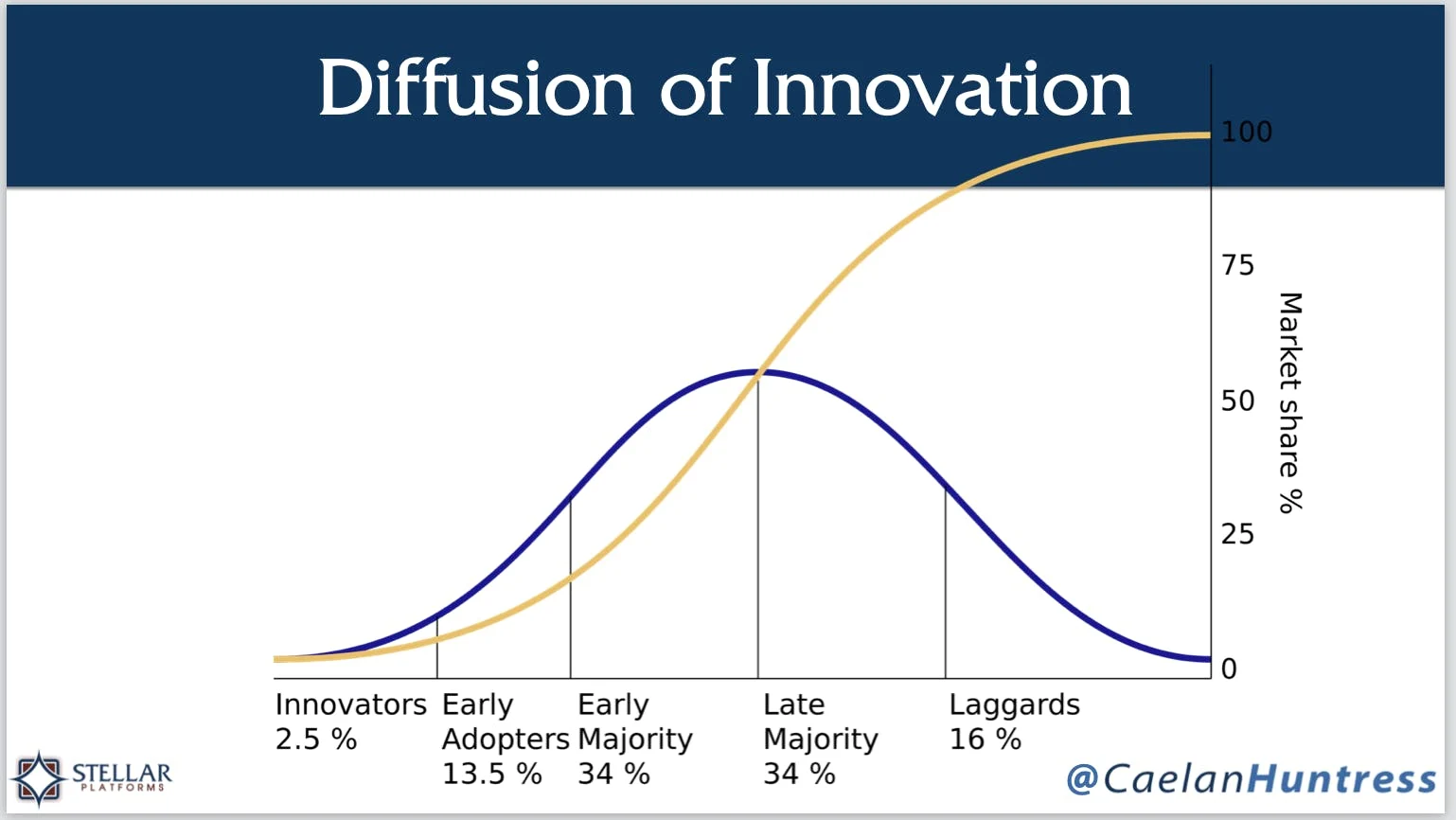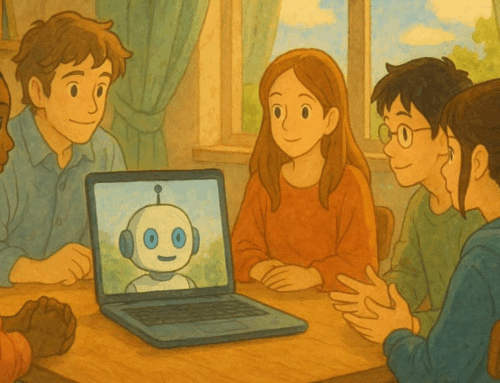New ideas are only found in surprise.
Before Thomas Edison demonstrated the electric lamp on 31 December 1879, he was a laughingstock in the press. “I have not failed,” he famously said, “I’ve just found 10,000 ways that won’t work.”

To innovate something new, Edison had to leave behind what he already knew.
New ideas are only found in surprise.
What you already know will not help you discover anything new, unless you take your knowledge into the unknown.

There are things you know you don’t know, illustrated in the overlap above. But there are many more things you don’t know that you don’t know – and that’s a rich storehouse of possible innovation.
“To generate creative ideas, it is important to start from an unusual place. But to explain those ideas, they have to be connected to something familiar.” – Adam Grant
Discovery requires curiosity.
Being curious leads you away from what you already know for certain.
Questioning our assumptions gets us into the unknown, where we can combine complexities, to reveal new patterns and relationships, new insights and capabilities.
Innovation creates the unexpected, and cannot be found with conventional thinking. Creating new ideas requires multiple new inputs, of both ideas and information. And you can’t find that within the sphere of what you already know – unless you remix.
All new ideas are just combinations of old ideas.
No idea exists in a vacuum.
To find new ideas, combine existing ideas in new and interesting ways.
“It’s at the intersection of ideas that new ideas emerge.” – Col Fink
Comedy writer Gene Perret says that any joke is just a combination of two or more ideas blended into one. And as Kirby Ferguson says in ‘Everything is a Remix,’ a remix means ‘To copy, transform and combine existing materials to produce something new.’ That combination creates synergy, where 1+1 = 3.
Ideas proliferate as they overlap.
At least one Nobel Prize has been attributed to a messy desk. Leon Heppel, sifting through piles on his desk at the National Institutes of Health, found 2 letters from 2 unconnected researchers, and combined their ideas to discover something new and brilliant.
According to Harvard Business School professor Clayton Christensen, 95% of product innovations fail. But when you consider the exponential growth that comes because of innovation, failing 19 out of 20 times is a worthwhile price to pay.
You get asymmetrical reward the further you are on the Diffusion of Innovation curve. Out on the bleeding edge, you can achieve exponential impact. Here’s a 3-minute video overview of this theory.
What is a new idea can you apply to a boring idea?
There are more possible variations in a game of chess than there are atoms in the observable universe. There are 20 different opening moves that White can make, and thats it. No new moves, no innovations, just a choice of options.
Every iteration beyond what is known multiplies the possible outcomes. There are more than (10 to the 111th power) positions (including illegal moves) in Chess. If you change the potential starting position of the chess pieces, the possibilities are literally endless.
What is an unexpected starting point for you to use in your field of expertise? How could you expand into new possibilities, with an open mind?
To find originality, make new combinations.
Every overlap is new. There are more combinations of ideas than there are original ideas.
There is nothing new under the sun, except what you combine together. Your next big idea is two small ideas overlapped. The most original ideas combine two ideas so differently that nobody else saw the connection.
If you want some help brainstorming new ideas, and articulating them in clear copywriting, join my next workshop.






Leave A Comment